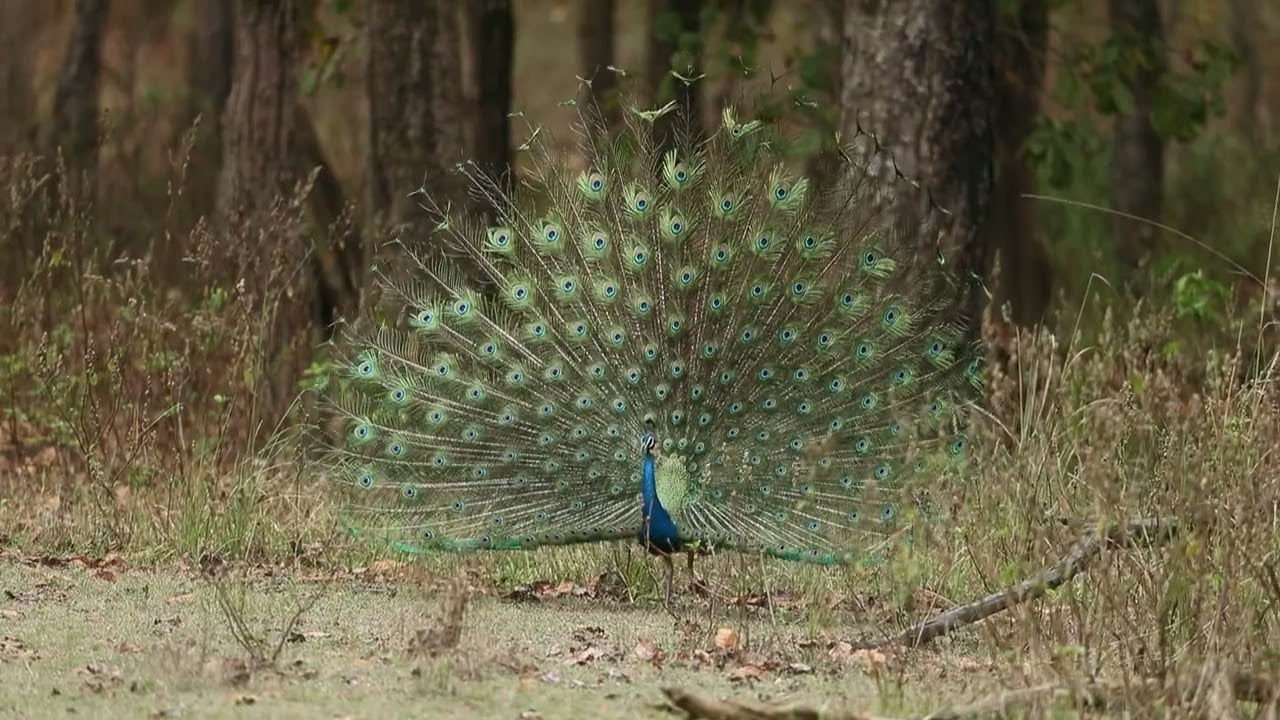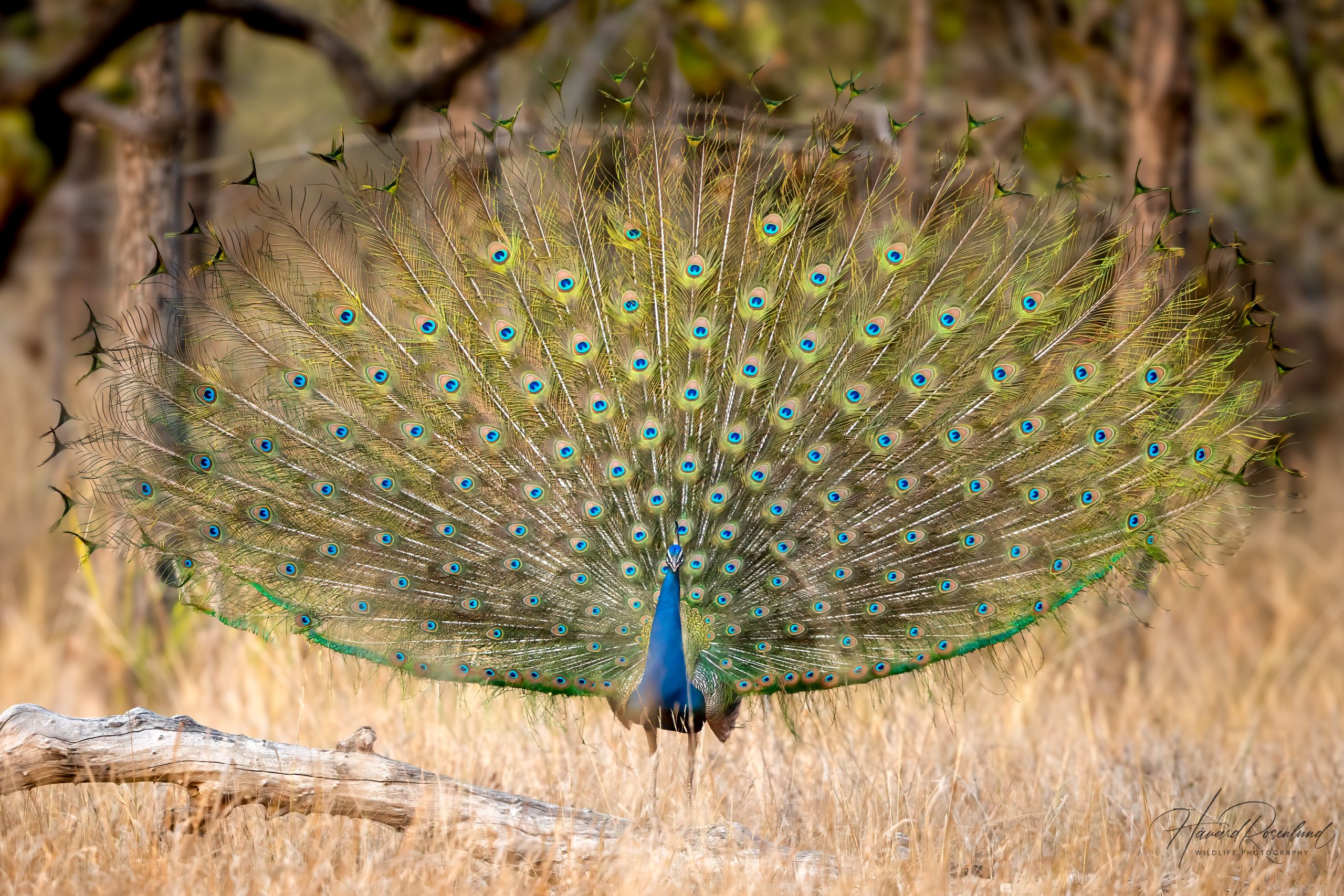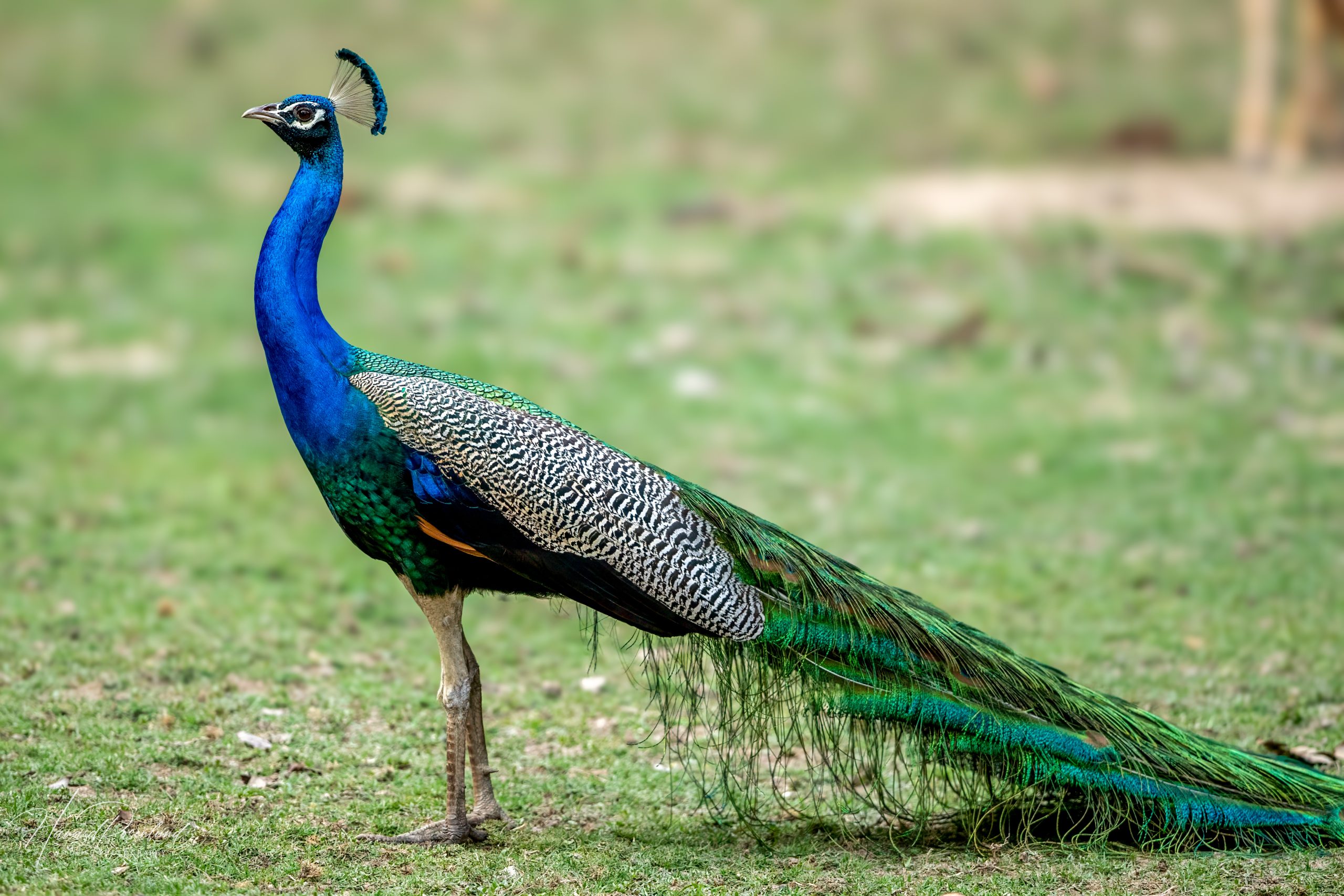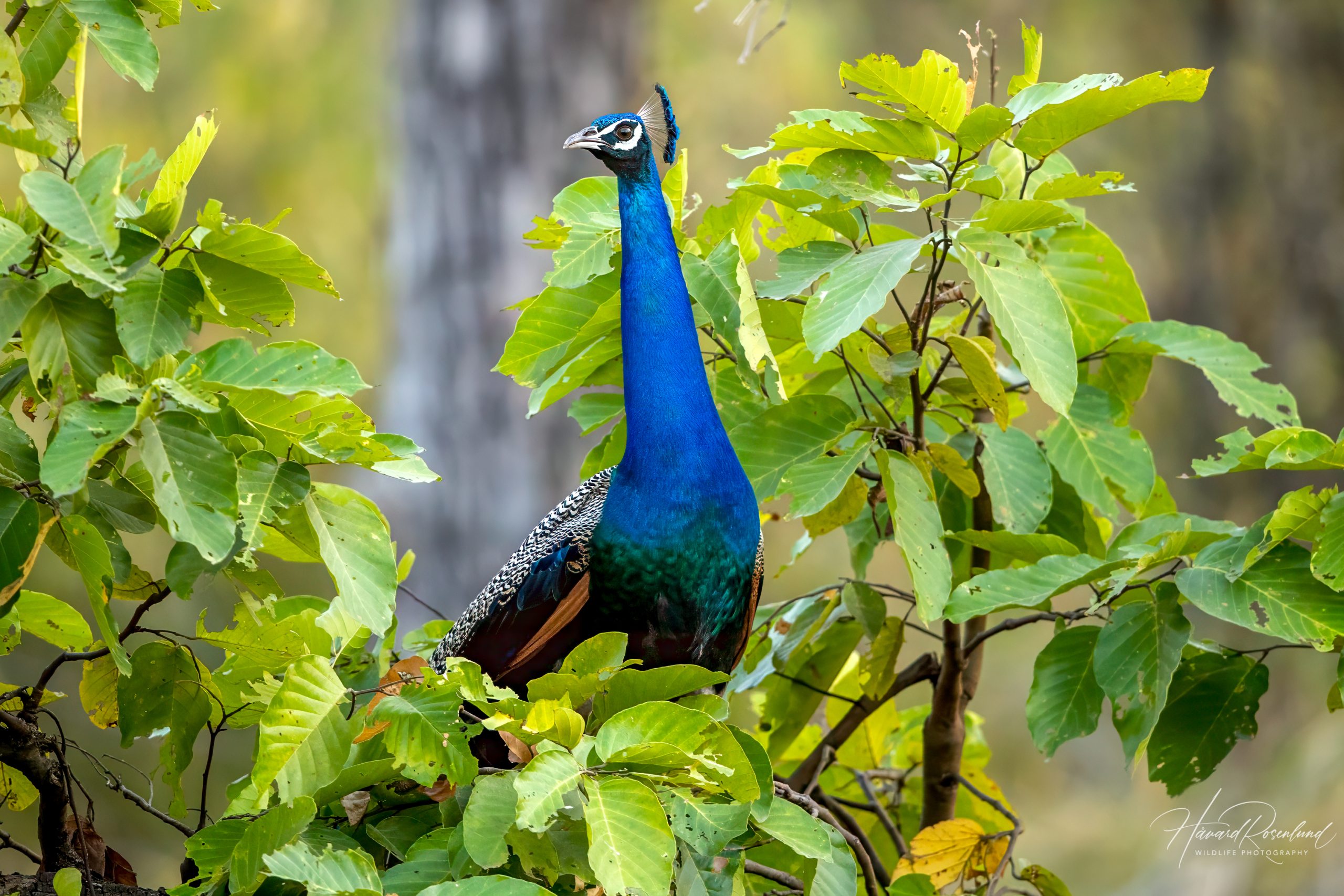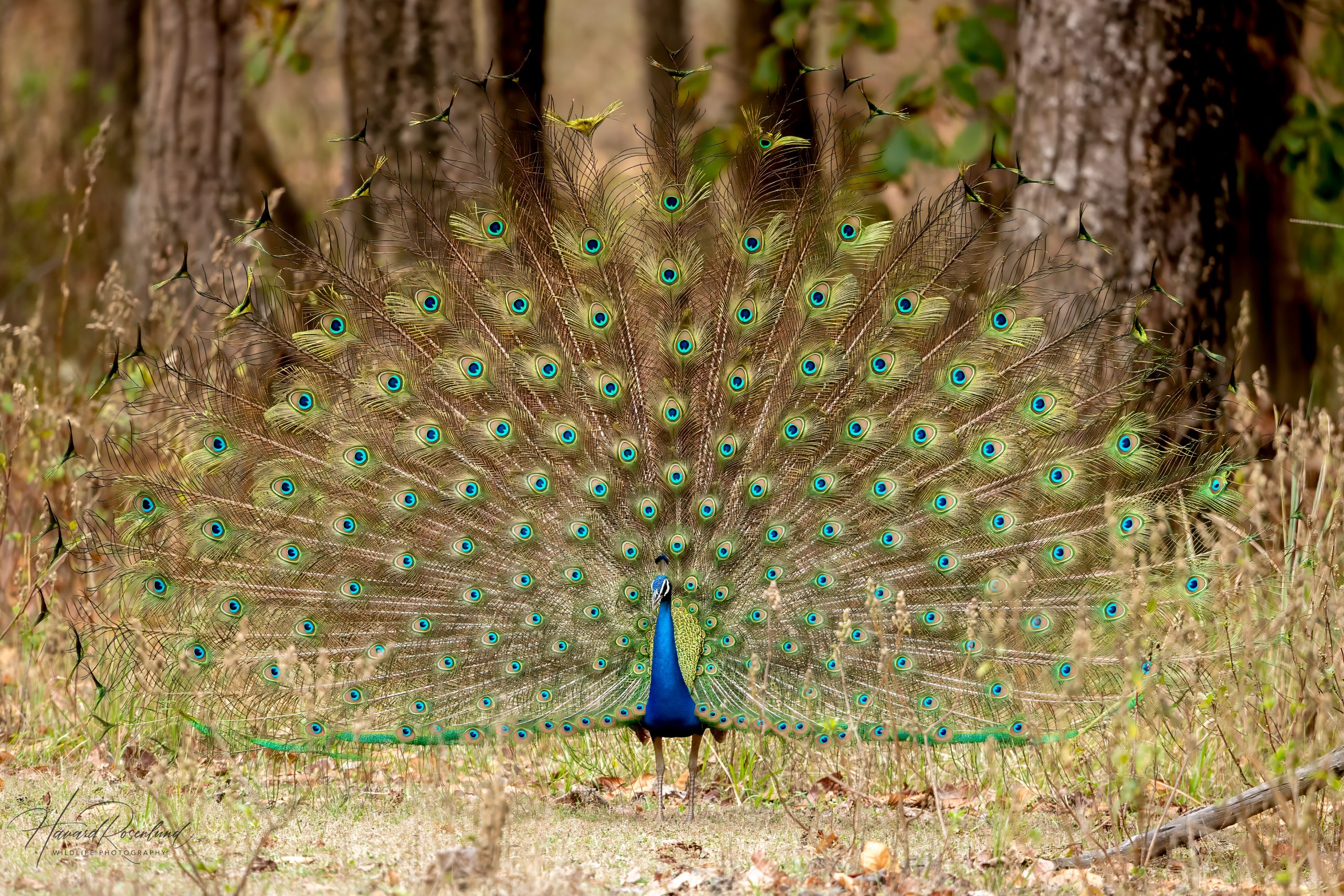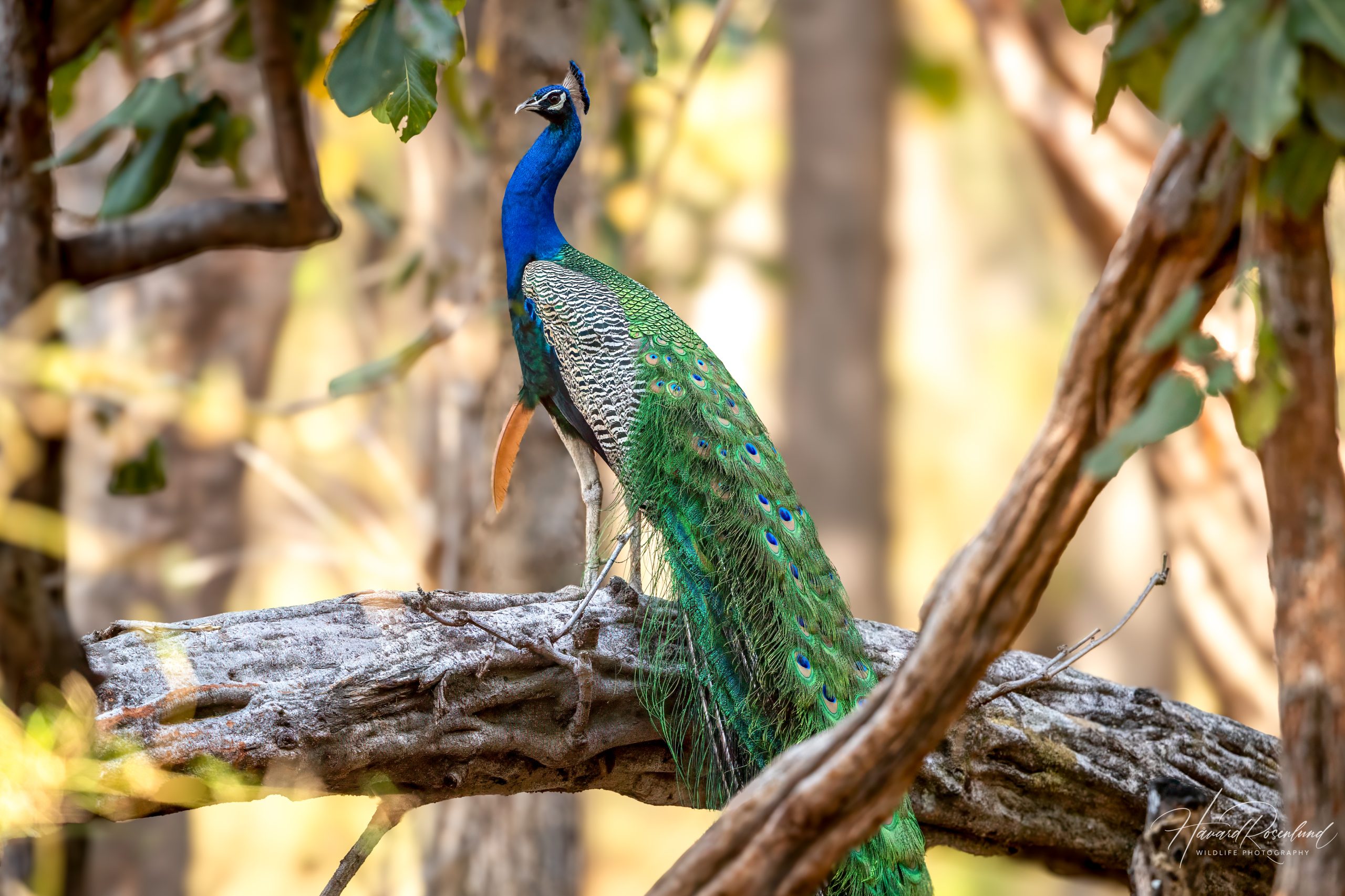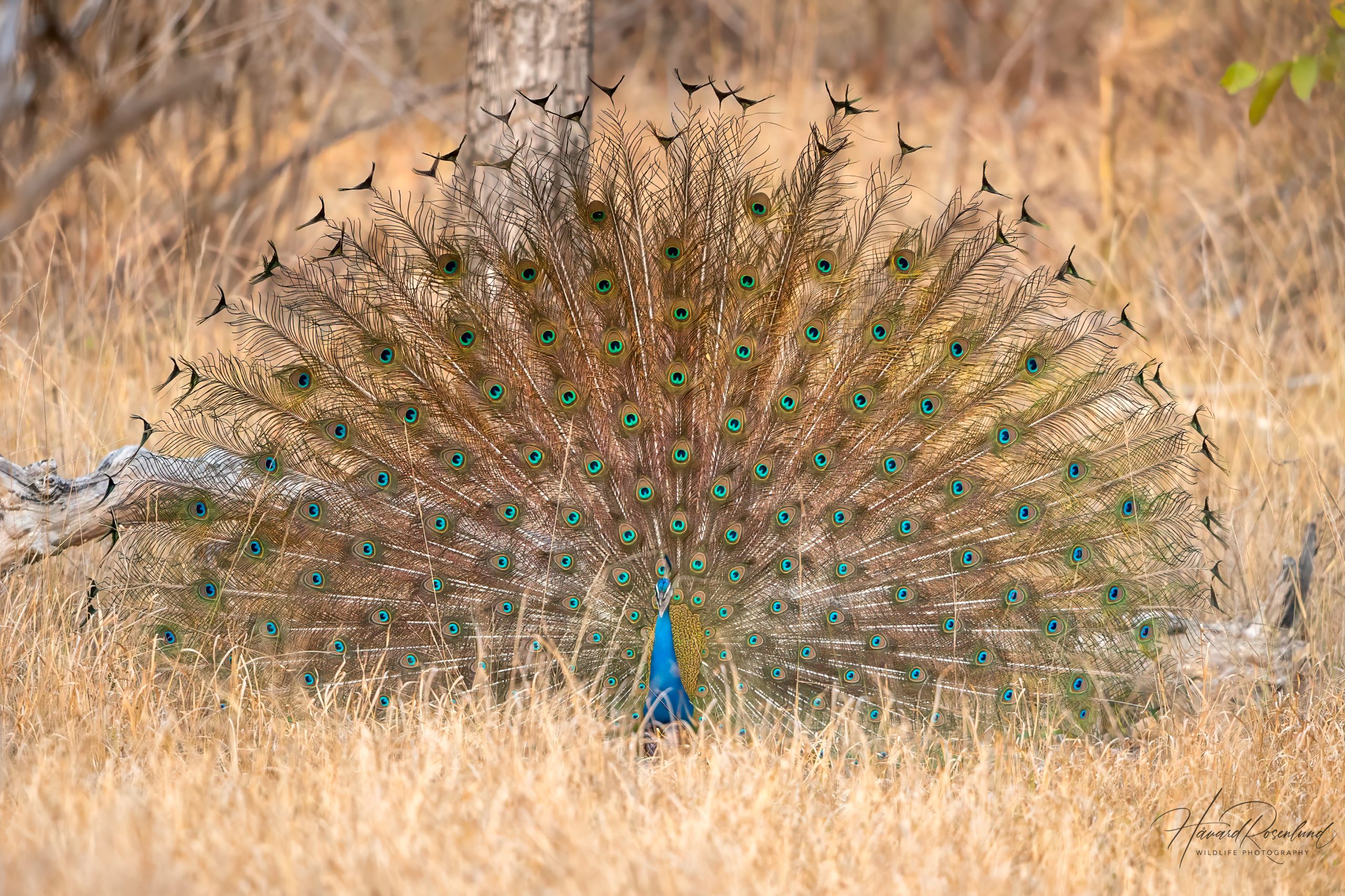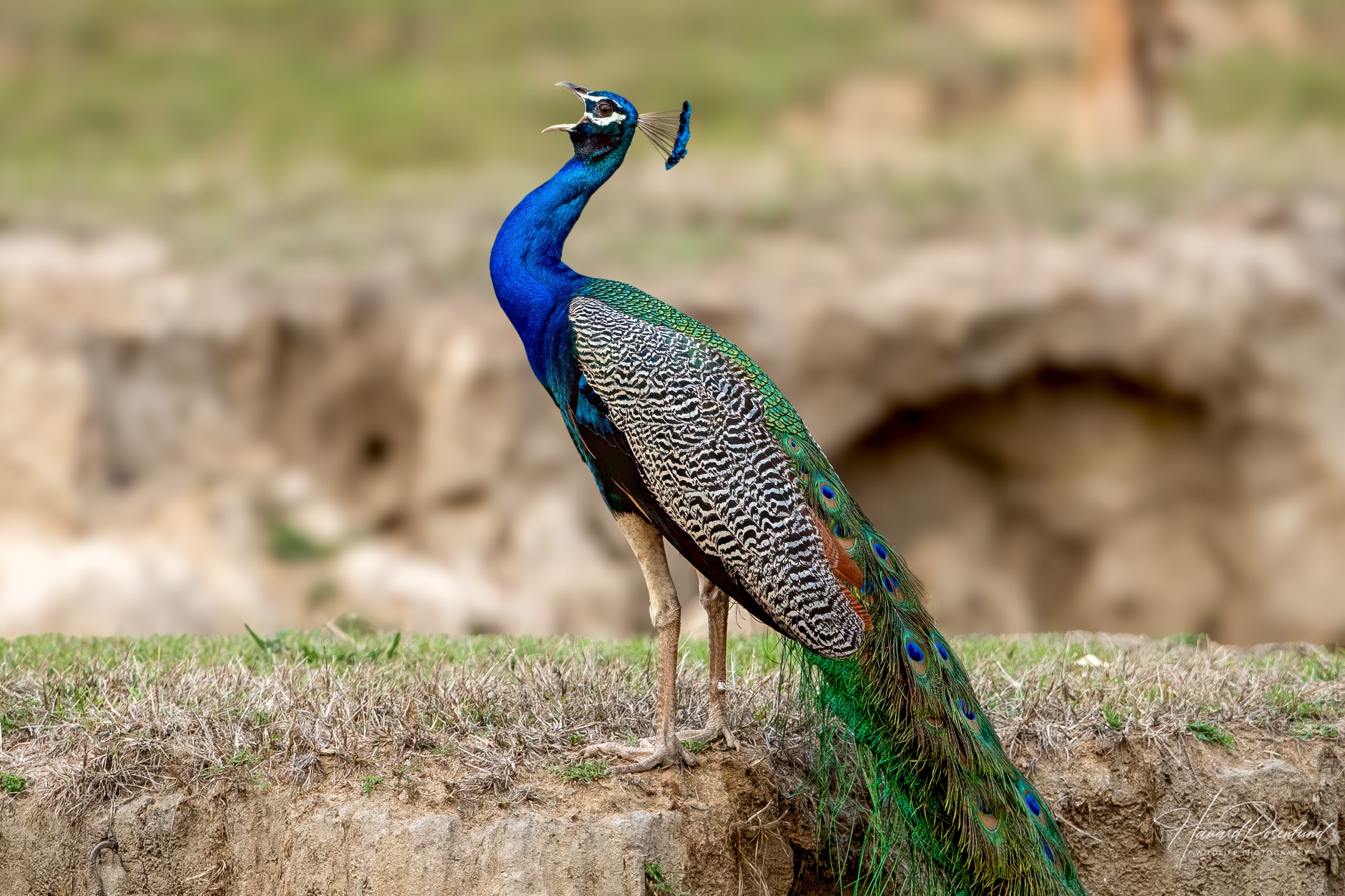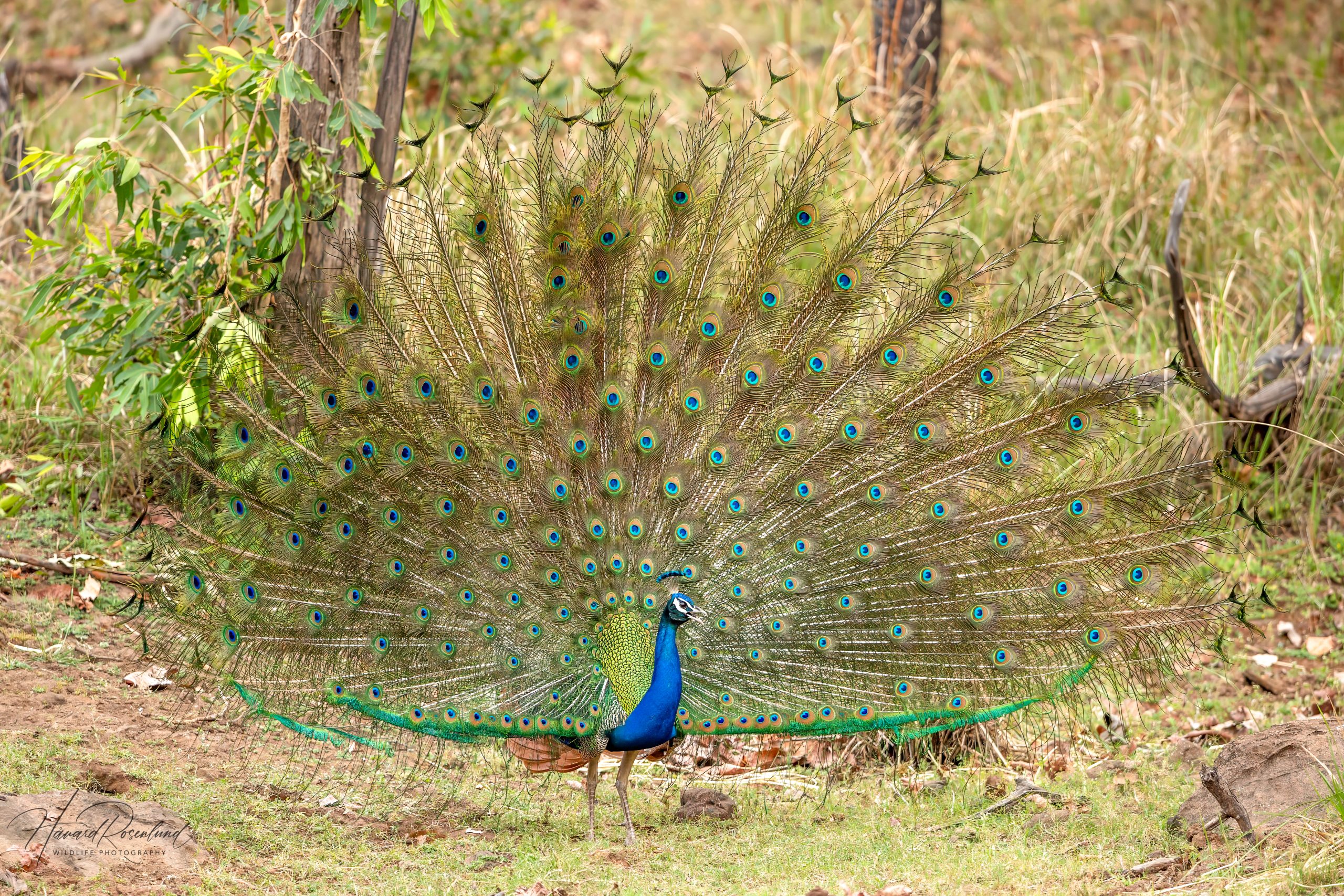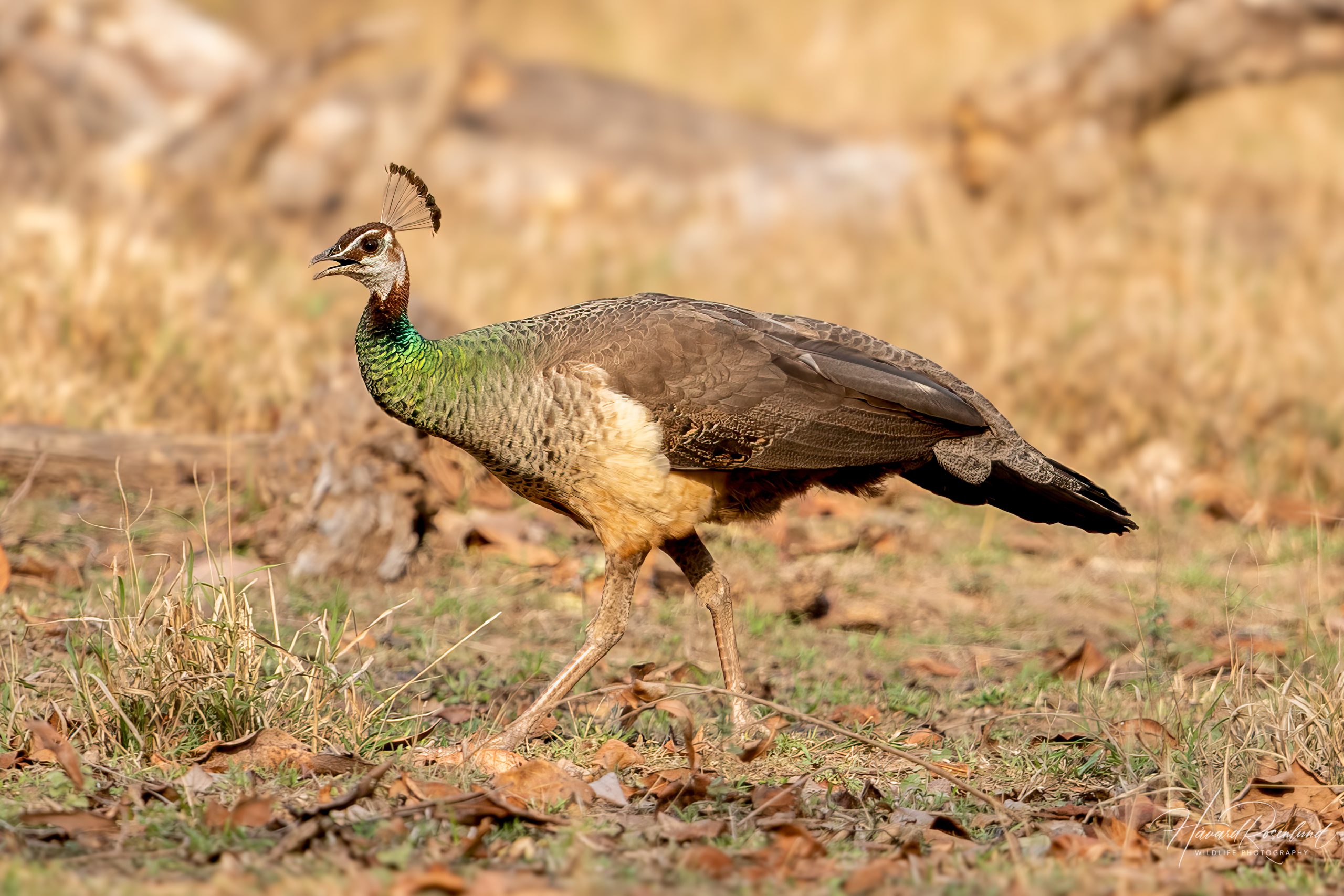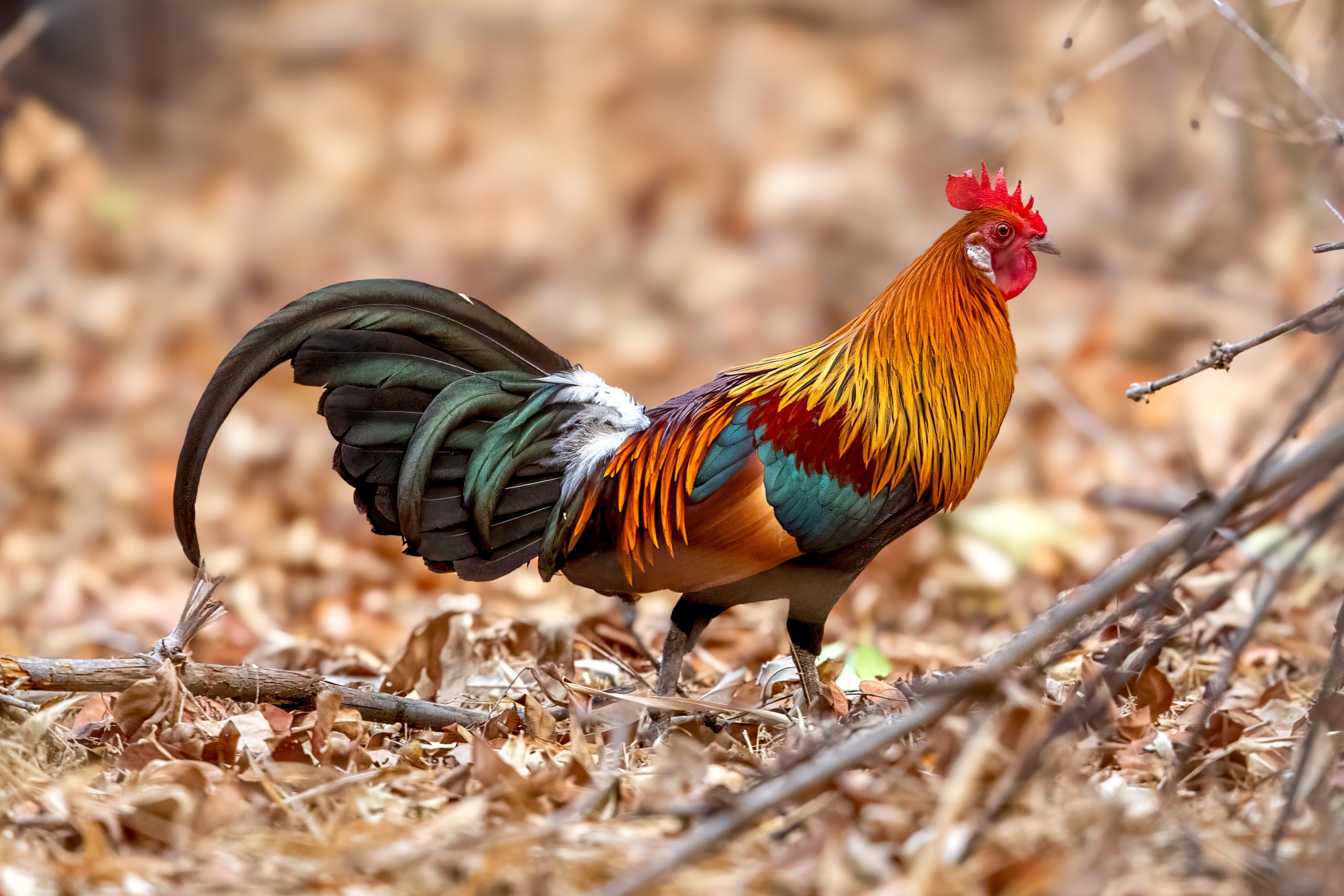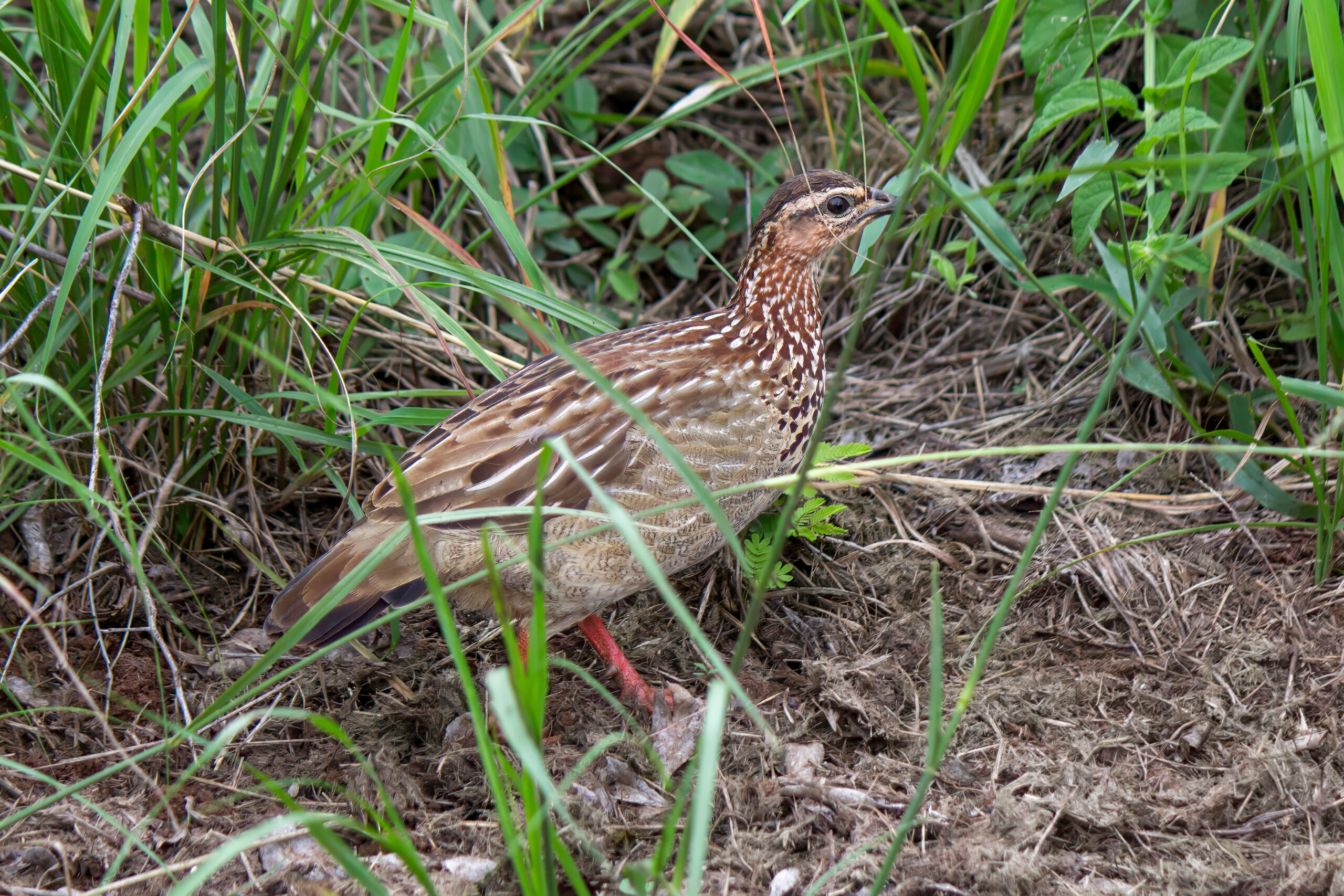Description
The Indian peafowl (Pavo cristatus) is a large and colorful bird native to the Indian subcontinent. Males, known as peacocks, are renowned for their vibrant blue plumage and striking train, which can exceed 2 meters (6.6 ft) in length and is adorned with iridescent “eye” patterns. Females, or peahens, are less flamboyant, featuring a mix of brown, grey, and green hues. Both sexes have a fan-shaped crest on their head. Peafowls typically range from 1 to 1.2 meters (3.3-3.9 ft) in length and weigh between 4 to 6 kilograms (9-13 lbs). The train feathers of a peacock are actually not true tail feathers but elongated upper tail coverts.
Indian peafowls are similar to their close relative, the green peafowl (Pavo muticus), found in parts of Southeast Asia. The train of the males are similar to that of the Indian peafowl, but the green peafowl has a green and bronze plumage (both sexes). Green peafowl also have a more pointed head-crest, compared to the fan-shaped crest of the Indian species.
Diet & habitat
Indian peafowls thrive in a variety of habitats, including deciduous forests, scrublands, and cultivated areas near human settlements. They are omnivorous, with a diet that includes seeds, insects, small mammals, and reptiles. They are also known to consume various crops and garden plants, making them frequent visitors to agricultural lands. These birds forage primarily on the ground, using their strong beaks to dig and scratch the soil. Their feeding behavior often involves moving in groups, which provides some protection against predators.
Behavior
Indian peafowls are vocal birds with a range of calls used for communication. The most distinctive is the loud “pia-ow” call, which can be heard during the breeding season and serves as both a mating call and a territorial signal. These birds, despite their size, are capable fliers and sometimes roost in tall trees to avoid predators.
Peafowls are social, often seen in small groups or family units. Males are known for their elaborate courtship displays during breeding season, where they fan out their trains and perform a dance to attract females. These displays are not just visual; they also produce a low-frequency sound that may play a role in mate attraction. Once the breeding season is over, the male will shed its train feathers, which will regrow again, often longer and more elaborate, before the next breeding season. At abut 5 or 6 years of age, the male’s train reaches its full length.
Here is a video of a Indian peacock displaying its train during breeding season in Kanha National Park, India.
Nesting
The breeding season for Indian peafowls typically occurs during the monsoon, from April to September. Males establish and defend territories, where they display to attract females. After mating, the female lays a clutch of 4 to 8 eggs in a shallow nest on the ground, often hidden under vegetation. The incubation period lasts about 28 days, with the female solely responsible for incubating the eggs and caring for the chicks. Once hatched, the chicks are precocial, meaning they are relatively mature and mobile. They fledge at around two weeks but remain with the mother for several months.
Relationship to humans
Indian peafowls hold significant cultural and religious importance in India, where they are considered sacred and are associated with various deities, particularly in Hinduism. The peacock is also the national bird of India, symbolizing grace and beauty. Globally, peafowls are popular as ornamental birds in parks, zoos, and private estates. They have been introduced to various countries, including the United States (particularly Florida), Australia, and New Zealand, where they have established feral populations.
Status
The Indian peafowl is listed as least concern by the IUCN due to its wide range and stable population. However, habitat loss and hunting in some regions pose ongoing threats. In New Zealand and Australia, where its has become an invasive species, it has a negative impact on local ecosystems and is considered a nuisance and a pest.




